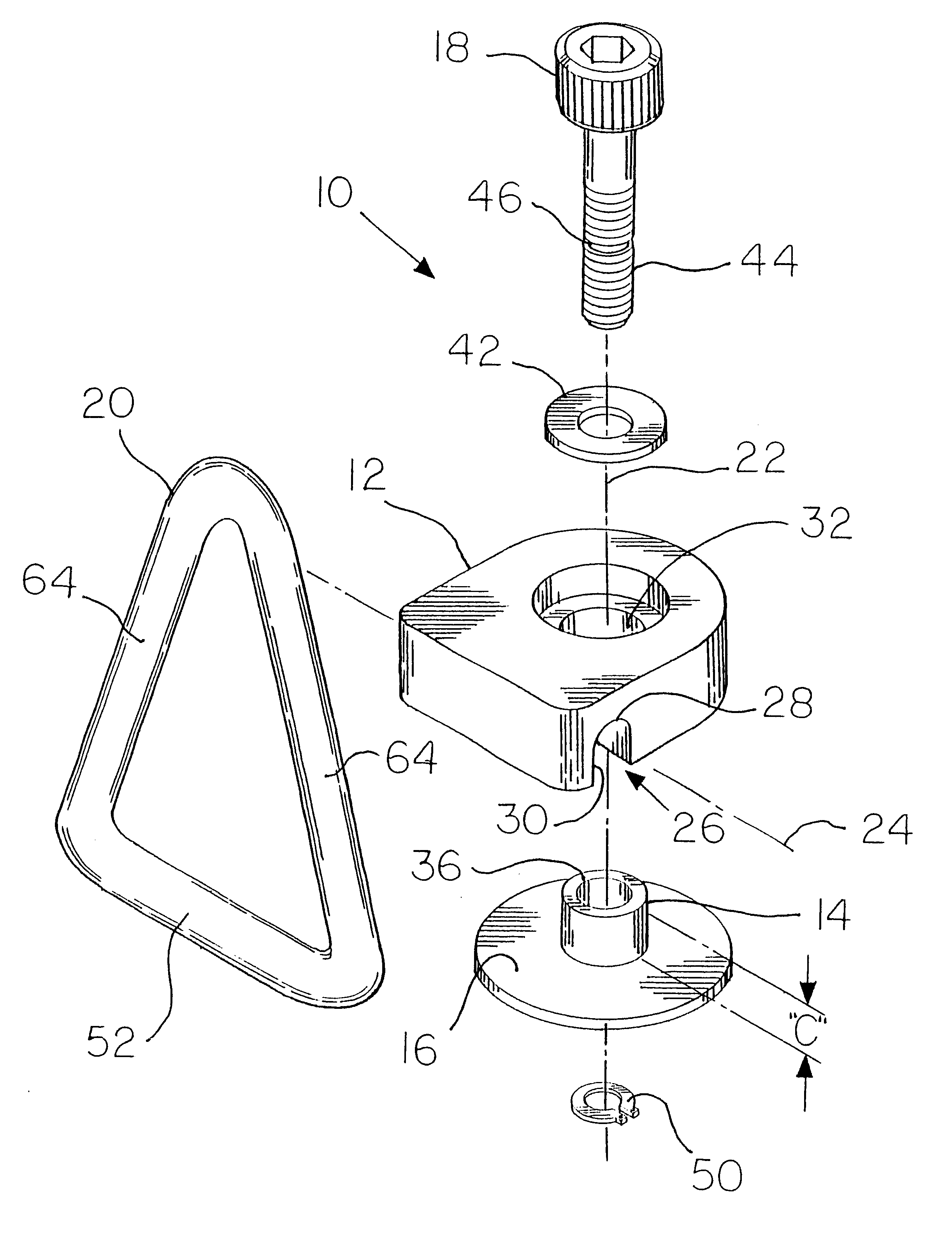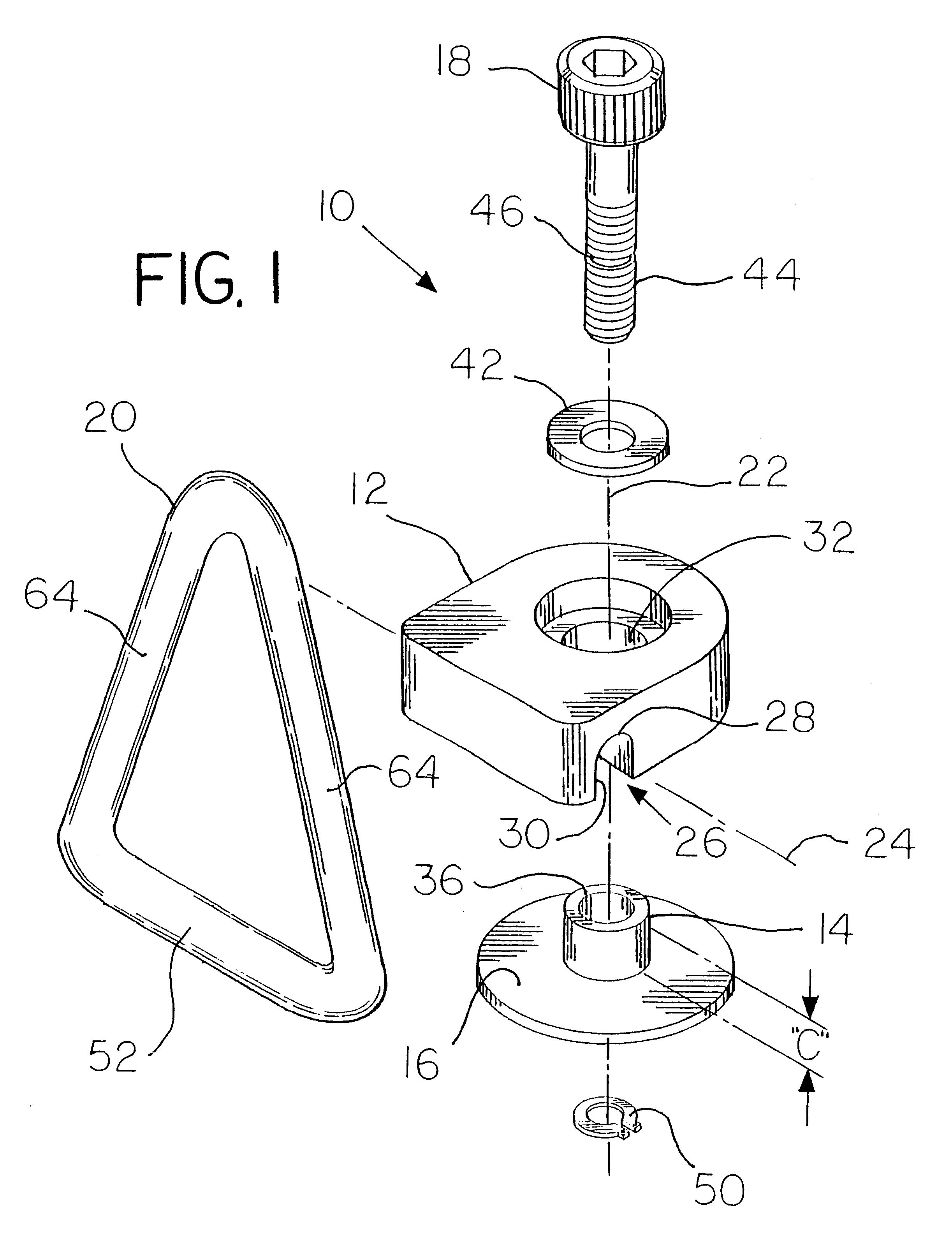Side mount hoist ring
a hoist ring and side mount technology, applied in the field of hoist rings, can solve the problems of inability to adapt to use with "as forged" parts, high cost of machining operations on parts, and inability to meet the requirements of prior configurations, etc., to achieve the effect of avoiding several expensive machining operations and avoiding the possibility of machining failures
- Summary
- Abstract
- Description
- Claims
- Application Information
AI Technical Summary
Benefits of technology
Problems solved by technology
Method used
Image
Examples
Embodiment Construction
Referring now to the drawings wherein like reference numerals designate identical or corresponding parts throughout the several views.
Referring particularly to the drawings, there is illustrated generally at 10 a side pull hoist ring assembly. The side pull hoist ring assembly 10 includes a body 12, a cylindrical bushing 14, a load bearing flange 16, a mounting member 18, and a lift ring 20.
The body 12 includes a longitudinal axis 22 and a lateral axis 24 that do not intersect. The lateral axis 24 is generally normal to the longitudinal axis 22 and the two axes are offset from each other by an offset distance noted by dimension "A". The body includes a generally U-shaped linear channel 26 extending generally along the lateral axis 24. The U-shaped linear channel has a generally arcuate bottom 28 and an open mouth 30. A generally cylindrical bore 32 is provided in the body 12 extending generally concentrically with the longitudinal axis 22. The generally cylindrical bore 32 has an ax...
PUM
 Login to View More
Login to View More Abstract
Description
Claims
Application Information
 Login to View More
Login to View More - R&D
- Intellectual Property
- Life Sciences
- Materials
- Tech Scout
- Unparalleled Data Quality
- Higher Quality Content
- 60% Fewer Hallucinations
Browse by: Latest US Patents, China's latest patents, Technical Efficacy Thesaurus, Application Domain, Technology Topic, Popular Technical Reports.
© 2025 PatSnap. All rights reserved.Legal|Privacy policy|Modern Slavery Act Transparency Statement|Sitemap|About US| Contact US: help@patsnap.com



